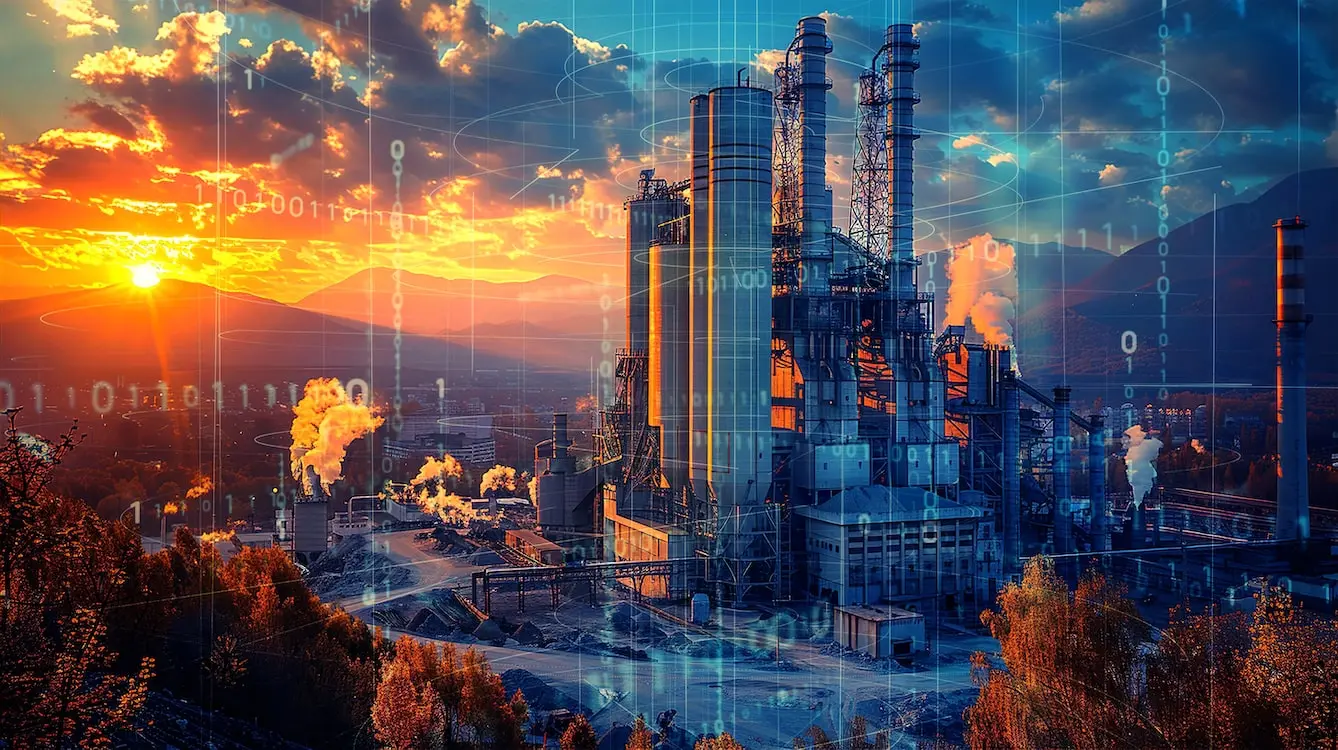
Executive Summary
Cement is the backbone of modern life. Used to construct buildings, roads, bridges, and other critical infrastructure worldwide, its versatility, strength, and durability make it indispensable in meeting the growing demands of urbanisation and economic progress.
But cement is also responsible for 8% of global carbon emissions (greater than deforestation, global shipping and aviation combined), meaning that its impact on climate change is considerable.
This paper outlines how the future of the cement industry relies on the industry embracing digitalisation to ensure a resilient, profitable and sustainable future. It brings considerable opportunities and, thanks to Industry 4.0 initiatives, the cement industry has already progressed its digitalisation journey significantly.
These early investments now put producers in a strong position to take advantage of data-driven decision-making and advanced technologies such as artificial intelligence (AI) and machine learning (ML) for process control and automation.
However, to date these benefits have yet to be realised widely or consistently by the industry.
Below, we highlight case studies of digitalisation from within the cement industry, to derive key learnings, including opportunities and roadmaps for success, the pitfalls to avoid, and where to prioritise action.
Additionally, our paper calls for a standardised approach to digital infrastructure across the cement industry. This already exists in the telecommunications, energy, healthcare, finance, and transportation industries, enabling effective data sharing, collaboration, and innovation across organisational boundaries. Data standards are key to enabling interoperability, which is achieved by defining common ontologies for data exchange so that data is consistent from one plant to another.
The adoption of a standardised digitalisation approach within the cement industry holds immense potential to revolutionise operations and drive unprecedented advancements. Integration with emerging technologies like AI and ML will further enhance decision-making capabilities, enabling proactive problem-solving and the discovery of innovative solutions. This digital transformation not only promises operational efficiency gains but also supports the industry’s decarbonisation journey by enabling real-time monitoring and optimisation of energy usage, emissions reduction strategies, and the development of low-carbon cement formulations.
Ultimately, the convergence of digitalisation and sustainability efforts will pave the way for a more resilient, efficient, and environmentally friendly cement industry, driving benefits that extend beyond our current imagination.
We hope that this paper inspires cement producers to advance their digitalisation efforts to reap the commercial and environmental benefits that can follow.

